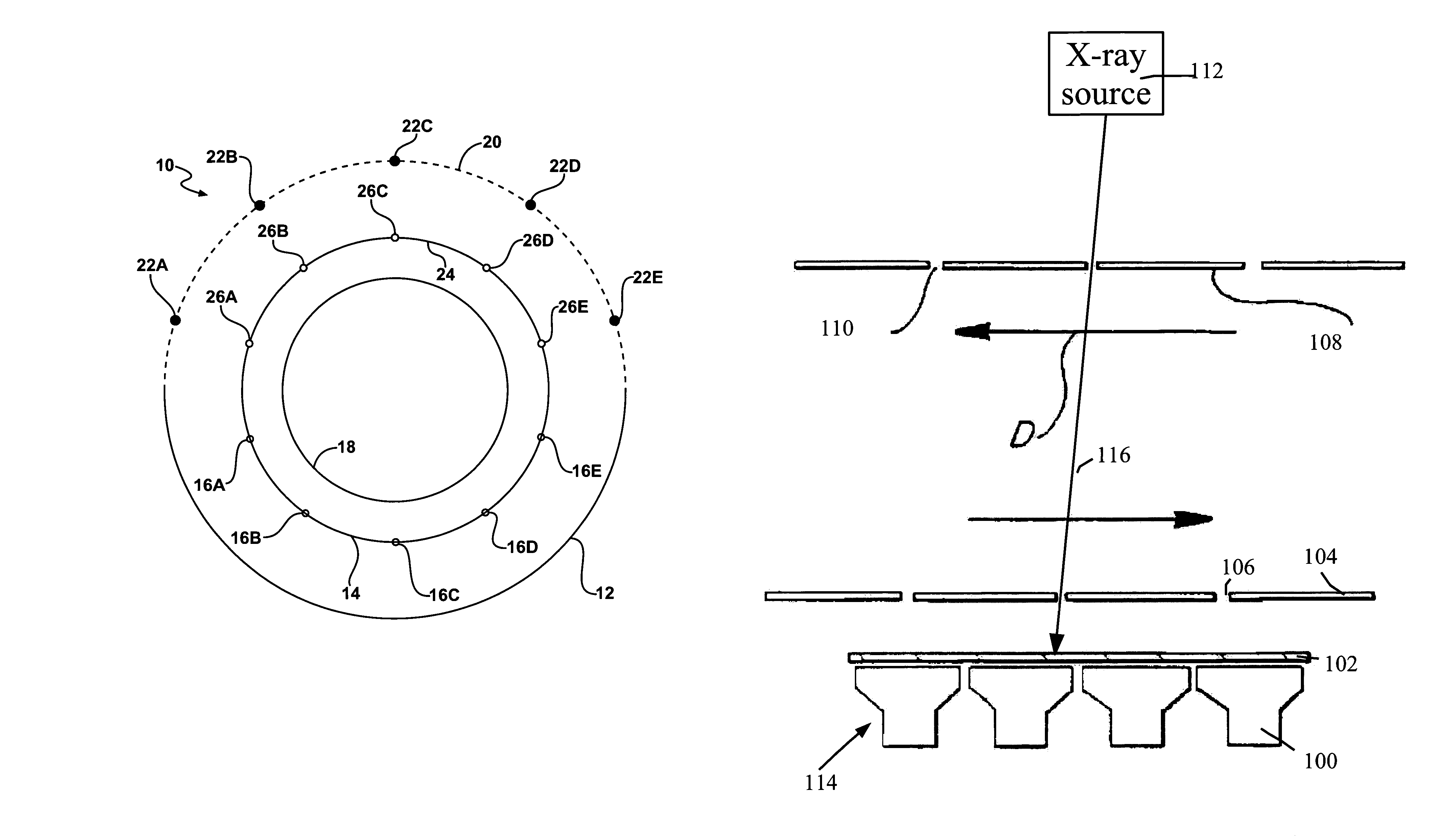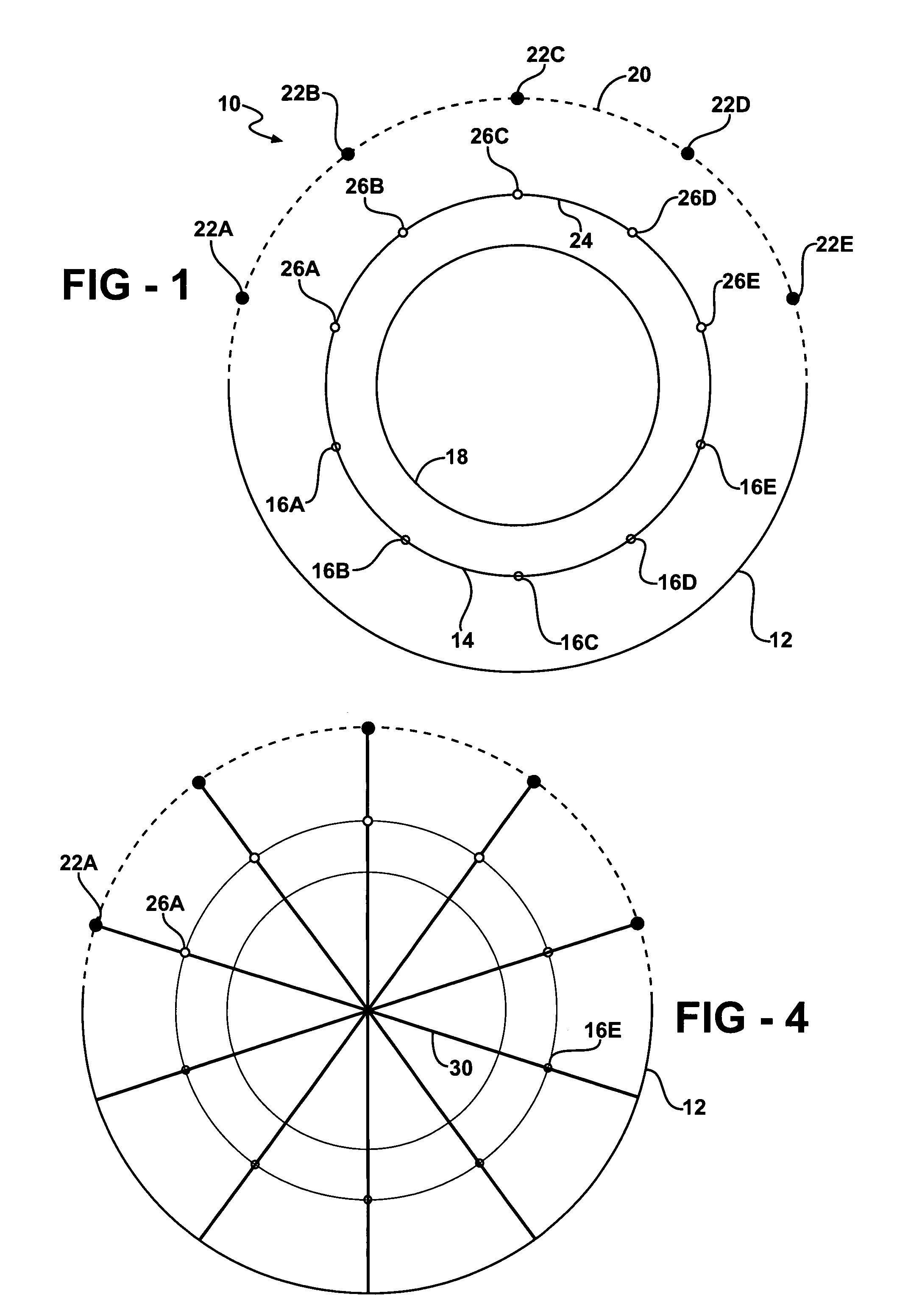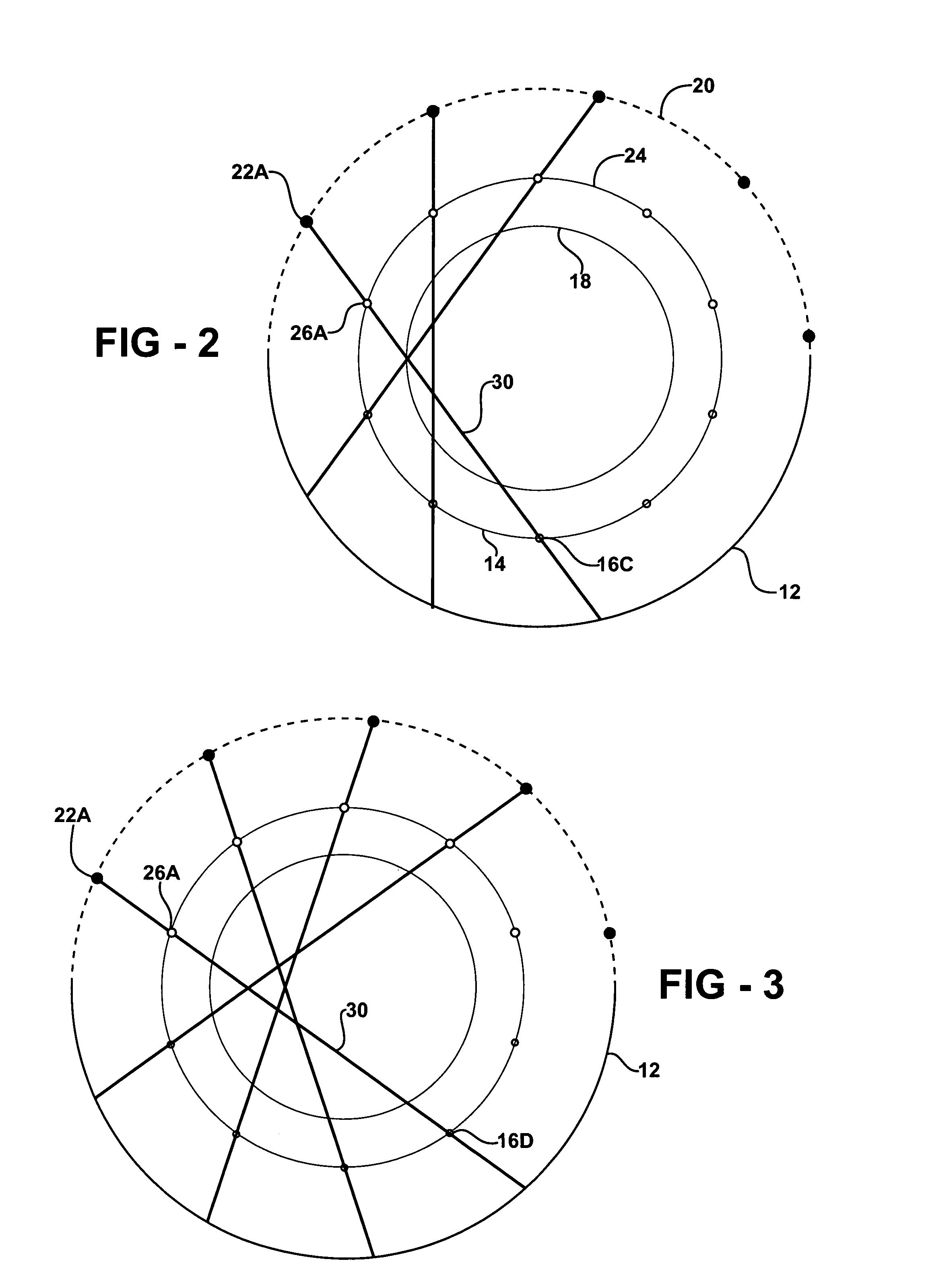Nuclear medical imaging device
a technology of medical imaging and nucleus, applied in the field of medical imaging, can solve the problems of reducing the exposure of an imaged subject to x-ray, blurring and noise in conventional x-ray cat devices, and reducing the x-ray exposure of an imaged subject, so as to achieve accurate correction of attenuation factors and increase the emission imaging time
- Summary
- Abstract
- Description
- Claims
- Application Information
AI Technical Summary
Benefits of technology
Problems solved by technology
Method used
Image
Examples
Embodiment Construction
[0037]Embodiments of the present invention provide an improved imaging of a subject. Imaging may be carried out using two electromagnetic wavelength regions, such as x-ray imaging and gamma imaging (such as SPECT). X-ray attenuation measurements can be used to provide an improved SPECT image, by allowing correction for attenuation variability of the gamma photons in a subject. The attenuation coefficient may be assumed to be the same for gamma photons or x-ray photons, or a model of the subject used to convert between attenuation coefficients so as to make an attenuation correction.
[0038]In representative embodiments of the present invention, attenuation measurements are carried out by determining attenuation of a radiation beam through the subject. A radiation source is located adjacent a field of view, and radiation from the radiation source is detected after being transmitted through the field of view. By varying the path direction of the radiation through the field of view, a ra...
PUM
| Property | Measurement | Unit |
|---|---|---|
| diameter | aaaaa | aaaaa |
| diameter | aaaaa | aaaaa |
| diameter | aaaaa | aaaaa |
Abstract
Description
Claims
Application Information
 Login to View More
Login to View More - R&D
- Intellectual Property
- Life Sciences
- Materials
- Tech Scout
- Unparalleled Data Quality
- Higher Quality Content
- 60% Fewer Hallucinations
Browse by: Latest US Patents, China's latest patents, Technical Efficacy Thesaurus, Application Domain, Technology Topic, Popular Technical Reports.
© 2025 PatSnap. All rights reserved.Legal|Privacy policy|Modern Slavery Act Transparency Statement|Sitemap|About US| Contact US: help@patsnap.com



